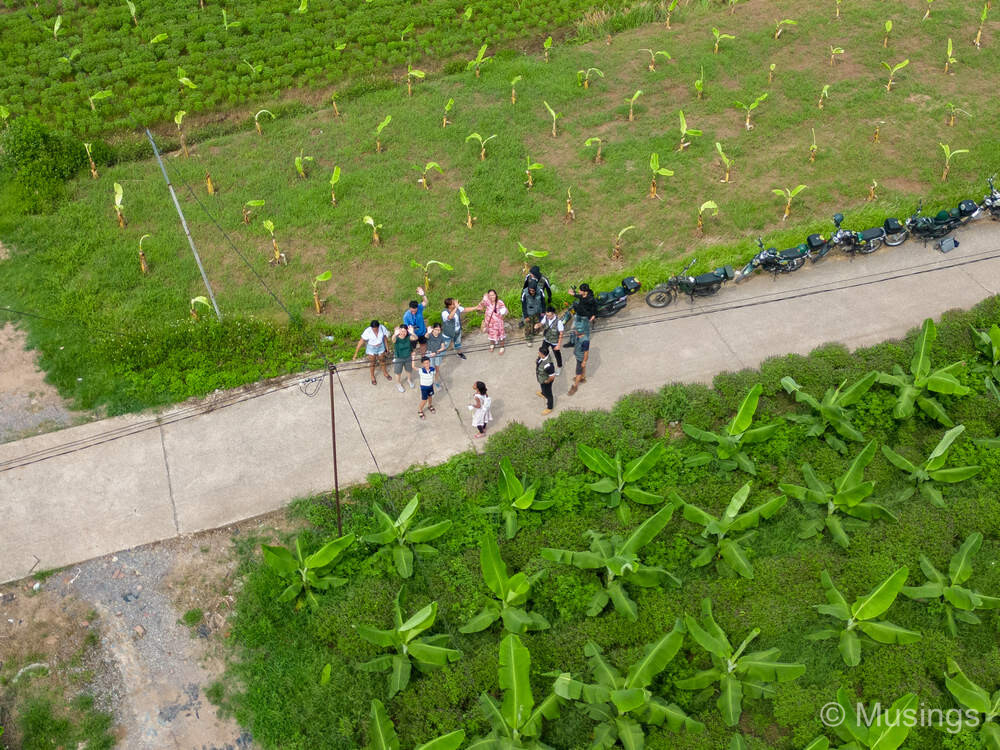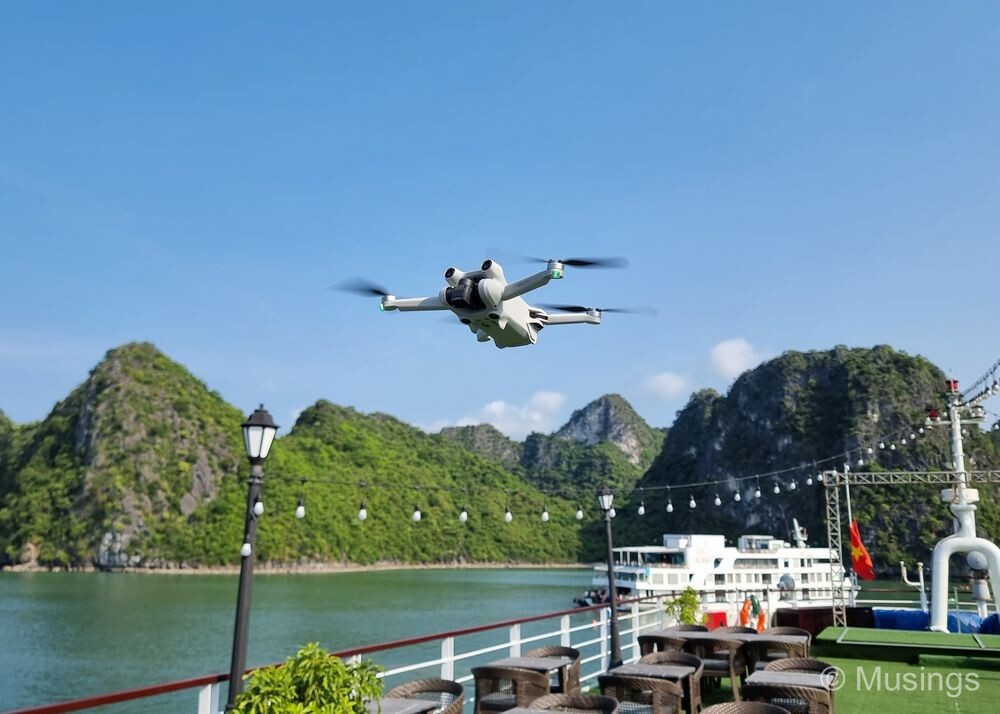This was the first time I’ve flown a drone overseas, so, well, lots of anxiety! But the experience turned out to be pretty good, due in large part to the mostly good weather we had, and also the sheer performance level of the DJI Mini Pro 3 drone. Here are my notes of this experience, and also for me to remember the lessons from it.
Firstly, flying drones in a foreign country while on tour wasn’t easy! Specifically, I was unfamiliar with the areas, what are the best vantage points, and – occasionally – how much time I’d have to fly and land. Careful reading up ahead of the trip also showed that many drone enthusiasts remarking that the Vietnamese do not have the aversions to drone videography, but still advise the application of common sense: i.e. do not fly over crowded spaces, keep to a safe flying altitude, and do not fly over military bases or police compounds. I flew conservatively, only in non-built-up areas, well away from crowds, and always checked firstly with our local guides and hosts whether it was safe to fly. The motorbike crew we were with on Day 09 was particularly interested in the drone – it seemed this was the first time they’d had a guest who brought along a drone!

As for the flying experience: the DJI Mini 3 Pro performed marvelously. That I had three batteries helped a lot – I did between two to three flights each time. Typically, I’d fly until about the 30% remaining battery level is reached, then brought the drone back home.
In all, not counting the near landing miss on Day 07 at Van Long Natural Reserve, I had no accidents. Whew! Excepting the flight over Hanoi’s plantation fields on Day 09, all of the other flights took place over large bodies of water, marshland or over hilly terrain: i.e. the drones would not had been recoverable if I had accidents.
Oddly, the Update Home Location feature on the DJI drone controller did not work very well, including when I was flying over the plantation fields at the outskirts of Hanoi. I wonder why that happened: perhaps GPS was not working very well? In any case, I brought the drone home each time through visual sighting and navigation.
The set of Freewell neutral density filters I bought from Amazon to use were absolutely essentially to get those cinematic and buttery smooth video footage. These filters reduce the amount of light reaching the drone’s camera: and they worked flawlessly – excepting the flight at Hang Mua viewpoint on Day 08 when I made the newbie mistake of mounting a filter that was too strong against the amount of ambient sunlight available. That ruined the video shots I got: a real loss, as the view from the Hang Mua viewpoint were just incredible. So, expensive lesson learned: do not use the ND1000 filter unless lighting is extreme. Use the ND64 filter when it’s normal sunny, and the ND32 when there’s daylight but cloudy.
The Samsung S23 Ultra that I used as the viewing screen with the DJI drone controller didn’t work very well. Specifically, even at its maximum brightness level and the use of a controller sunshade, I could barely make out the screen during the day time shoots at Van Long Natural Reserve, and also at Hang Mua. The latter contributed significantly to my not being able to detect that the real-time feed looked underexposed. Things were much better for the other shoots at Halong Bay. I bought a Poco X4 Pro 5G phone several months ago specifically for pairing with the DJI drone controller: it’s maximum brightness level is higher than that of the Ultra, but the Poco suffers from general slowness as a phone overall. Still, another lesson: bring this Poco phone next time out specifically as a controller screen.

Another totally newbie mistake: I brought the drone out to Cat Ba island… without a memory card. Yep, that happened. The microSD card had been left in the Dell XPS 13 laptop the previous night when I was working on the first day of Halong Bay drone videos. Thankfully, Cat Ba island itself isn’t that interesting, but the Viet Hai village is a safe place to practice flying. So, yet another lesson: next trip, bring at least three memory cards – 64GBs per card is more than enough – and make sure there’s a backup card at all times in the drone bag.
As for post-processing, I made use of a simple video editor – Movie Maker Video Editor Pro from Windows Store – and used background music I selected from Epidemic Sound. The videos were rendered using H.264 codec – the storage footprint savings against the H.265 codec seemed minimal – at 4K resolution, and 60fps.
In all, I had a great time doing simple and safe flights with the DJI Mini 3 Pro, and the possibility of being able to capture aerial footage is going to be a point of consideration for our next vacation places in the coming years!